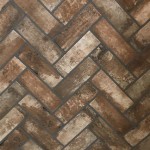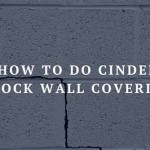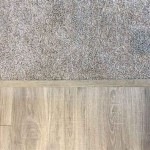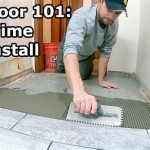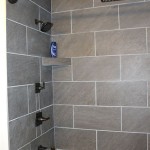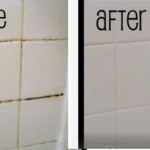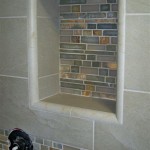Can You Install Tile Backsplash Over Drywall? A Comprehensive Guide
Installing a tile backsplash can significantly enhance the aesthetic appeal and functionality of a kitchen or bathroom. A common question that arises during the planning phase is whether it is permissible to install tile directly over drywall. The answer, while generally affirmative, is nuanced and depends on several factors. This article provides a comprehensive guide to installing tile backsplash over drywall, outlining the necessary preparations, best practices, and potential pitfalls to ensure a successful and long-lasting installation.
Drywall, also known as gypsum board, is a widely used building material for interior walls and ceilings. Its relatively low cost, ease of installation, and fire-resistant properties make it a popular choice in residential construction. However, drywall is also porous and susceptible to moisture damage. Therefore, when considering tile installation, especially in areas prone to high humidity like kitchens and bathrooms, careful consideration must be given to preparation and waterproofing.
Assessing the Drywall Condition
Before embarking on a tile installation project, a thorough assessment of the existing drywall is crucial. The condition of the drywall will directly impact the success and longevity of the backsplash. Look for signs of damage, such as water stains, mold growth, or crumbling areas. These indicate pre-existing moisture problems that must be addressed before proceeding. Water-damaged drywall is structurally unsound and will not provide a suitable substrate for tile.
If water damage is present, the affected drywall sections should be removed and replaced. Identify and rectify the source of the moisture to prevent recurrence. Failure to do so will undermine the new tile installation and lead to further damage and potential health hazards. Ensuring the drywall is clean, dry, and structurally sound is the foundational step for a successful tile backsplash installation.
Examine the drywall for any loose or peeling paint. Any existing coating must be properly adhered to the drywall. Loose paint will prevent the thin-set mortar from bonding correctly, resulting in tile failure. Remove any loose paint using a scraper or sandpaper. A clean, solid surface is essential for optimal adhesion.
Check for any unevenness or imperfections in the drywall surface. While thin-set mortar can accommodate minor variations, significant irregularities should be addressed. These can be leveled using joint compound or a skim coat of patching plaster. A smooth, even surface provides a more stable and visually appealing foundation for the tile.
Preparing the Drywall Surface
Once the drywall has been assessed and any necessary repairs have been completed, the surface needs to be properly prepared for tile installation. This involves cleaning, priming, and potentially applying a waterproofing membrane. These steps are essential to ensure proper adhesion and protect the drywall from moisture.
Begin by cleaning the drywall thoroughly to remove any dust, dirt, or grease. These contaminants can interfere with the bonding of the thin-set mortar. Use a damp sponge or cloth with a mild detergent to clean the surface, then rinse with clean water and allow it to dry completely. Ensuring a clean surface is paramount to achieving a strong and durable bond.
Following cleaning, apply a primer specifically designed for tile installation. Primer serves several important functions. It seals the drywall surface, reducing its absorbency and preventing the thin-set mortar from drying out too quickly. It also improves the bonding strength between the drywall and the thin-set mortar. Choose a high-quality primer that is compatible with gypsum board and the type of thin-set mortar being used. Apply the primer evenly according to the manufacturer's instructions and allow it to dry completely before proceeding.
In areas subject to high moisture, such as directly behind a sink or stove, consider applying a waterproofing membrane over the primed drywall. This membrane provides an additional layer of protection, preventing water from penetrating the drywall and causing damage. There are various types of waterproofing membranes available, including liquid-applied membranes and sheet membranes. Follow the manufacturer's instructions carefully when applying the membrane, ensuring complete coverage and proper sealing of all seams and corners.
Selecting the Appropriate Thin-Set Mortar and Tile
The choice of thin-set mortar and tile is critical for a successful backsplash installation over drywall. Not all thin-set mortars are created equal, and some are better suited for specific applications. Similarly, the type and size of tile can also influence the installation process and the long-term performance of the backsplash.
For tile installations over drywall, a modified thin-set mortar is generally recommended. Modified thin-set mortars contain polymers that enhance their bonding strength, flexibility, and water resistance. These additives are particularly important when installing tile over a substrate like drywall, which can be subject to movement and moisture exposure. Choose a thin-set mortar that is specifically formulated for use with the type of tile being installed and the substrate in question.
When selecting tile, consider the size and weight of the tile. Larger, heavier tiles place more stress on the drywall and require a stronger bond. For heavier tiles, a high-performance modified thin-set mortar may be necessary. Smaller, lighter tiles are generally easier to install and less demanding on the substrate. Consider the aesthetic preferences, but also prioritize compatibility with the drywall and the chosen thin-set mortar. Natural stone tiles, such as marble or granite, are generally heavier and may require additional support to prevent sagging or detachment. Porcelain or ceramic tiles are often lighter and more suitable for drywall installations.
Consider the use of a ledger board when installing heavier tiles. A ledger board is a temporary support structure attached to the wall to help hold the tile in place while the thin-set mortar cures. This prevents the tiles from sliding down the wall and ensures a level and even installation.
It is also prudent to consider the grout selection. While grout doesn't directly adhere to the drywall, it plays a crucial role in preventing water penetration. Using a high-quality, waterproof grout will further protect the drywall from moisture damage and prolong the life of the backsplash.
Before starting the installation, test the thin-set mortar and tile combination on a small, inconspicuous area of the drywall. This will allow to verify the adhesion and ensure that the chosen materials are compatible. Apply the thin-set mortar to the drywall and attach a few tiles. Allow the mortar to cure completely, then attempt to remove the tiles. If the tiles are difficult to remove and the thin-set mortar is firmly bonded to both the drywall and the tile, it indicates a successful combination. If the tiles come off easily, or if the thin-set mortar is not bonding properly, investigate and consider alternatives.
Proper planning and preparation are the keys to a successful tile backsplash installation over drywall. By assessing the drywall condition, preparing the surface, and selecting the appropriate materials, it is possible to achieve a beautiful and durable backsplash that will enhance the value and enjoyment of the home. Remember to consult with a qualified professional if any doubts or concerns arise during the process.

Can You Tile Over Drywall Must See

How To Add Subway Tile Backsplash Over Drywall Transform Your Kitchen For 100

How To Install Tile Backsplash Fixthisbuildthat

How To Prepare Drywall For A Tile Backsplash Mr Handyman

How To Install Tile Backsplash Fixthisbuildthat

How To Install Tile Backsplash Fixthisbuildthat

How To Prepare Drywall For A Tile Backsplash Mr Handyman

How To Add Subway Tile Backsplash Over Drywall Transform Your Kitchen For 100

A Subway Tile Backsplash Install Art Renovation
How I Tiled Over My Tile Backsplash By Myself Without Mortar Business Insider
Related Posts

